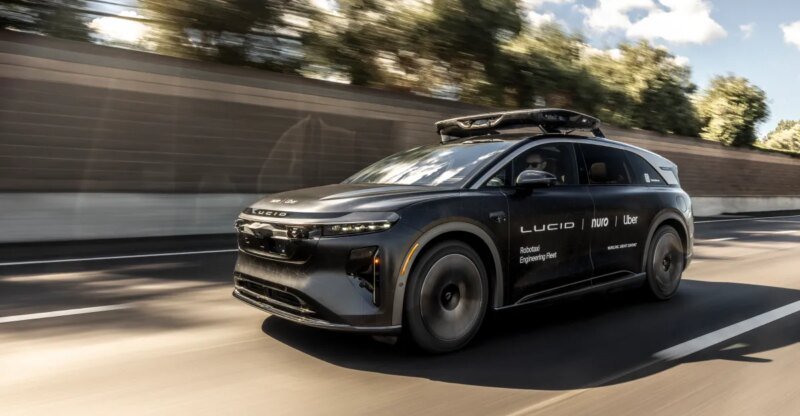Essential Insights
-
Testing Phase: Lucid, Uber, and Nuro are conducting on-road tests with the modified Lucid Gravity SUV, but must secure driverless operational permits and ridehailing permits before accepting paying passengers.
-
Robotic Fleet Plan: The companies plan to deploy 20,000 autonomous vehicles in the U.S. over the next six years, with over 100 robotaxis in an engineering fleet coming soon.
-
Market Dynamics: Uber aims to regain market share lost to Waymo by launching its robotaxi program in the Bay Area, amid rising competition between the two companies.
-
Collaborative Competition: Uber and Waymo are collaborating in Austin and Atlanta, allowing Uber users access to Waymo’s robotaxis, creating a complex dynamic as the companies also compete in other markets.
Uber’s Ambitious Entry
Uber has set its sights on challenging Waymo’s robotaxi supremacy in San Francisco. Recently, the company partnered with Lucid and Nuro to launch a fleet of 20,000 autonomous vehicles across the United States over the next six years. This powerful alliance plans for their first vehicle, a modified Lucid Gravity SUV, to hit the roads soon. However, they face critical hurdles. Before accepting fare-paying passengers, Uber and its partners must acquire driverless operational permits from the Department of Motor Vehicles and ridehailing permits from the California Public Utilities Commission. The companies have proactively engaged policymakers at every level, showcasing their commitment to transparency.
Moreover, the Bay Area has a reputation as a pioneer in groundbreaking technology. Therefore, it is no surprise that Uber’s next-generation robotaxi program will launch here next year. By developing a fleet of over 100 engineering prototypes, the companies will rigorously test the technology on the ground before full-scale deployment. As Uber attempts to reclaim its market share lost to Waymo, the stakes are high. Earlier data showed that Waymo’s market presence in San Francisco eclipsed that of its competitors due to its recent expansion.
The Competitive Landscape
While Uber aims to boost its presence, it must also navigate a complex relationship with Waymo. Although both companies are competitors, they collaboratively operate in Austin and Atlanta, where Waymo’s services are accessible through Uber’s platform. This partnership raises questions about how their dynamics may shift as Uber intensifies its efforts in San Francisco. The rivalry could influence both companies to innovate faster, ultimately benefitting consumers seeking reliable transportation options.
As technology continues to evolve, widespread adoption of robotaxis in urban environments may shift public perceptions and behaviors. Instead of solely competing, companies could find ways to complement each other, contributing to overall advancements in transportation. The journey ahead holds promise for both ridesharing and autonomous vehicle industries. Ultimately, the landscape will continue to shape and redefine how we think about mobility in our cities.
Continue Your Tech Journey
Stay informed on the revolutionary breakthroughs in Quantum Computing research.
Discover archived knowledge and digital history on the Internet Archive.
TechV1

